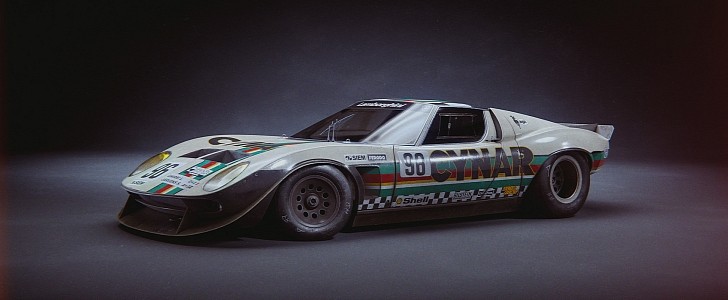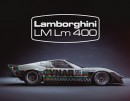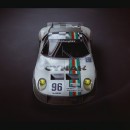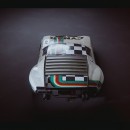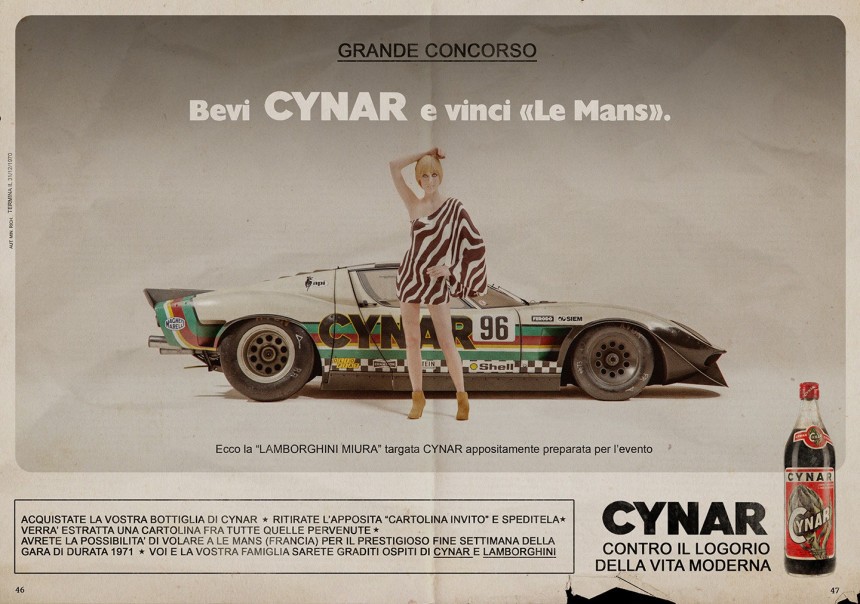These days, Lamborghini's Squadra Corse racing arm is a strong operation. On the track, the Italians compete in GT championships and run the Super Trofeo one-make series; on the road, the division distills the Sant'Agata Bolognese essence in both V10 and V12 form. Nevertheless, things weren't always so, even though the rendering that's now on your screens portrays a different path, one that fuels our high-octane dreams.
The Miura, which ensured the brand a place in the motoring hall of fame and is credited for popularizing the supercar genre, was born as an undercover operation, a machine that had racing in its genes but faced the motorsport opposition of company founder Ferruccio Lamborghini.
Unlike his rival, Enzo Ferrari, who saw road cars as a means to keep his racing activities alive, Ferruccio wished to steer clear of the high costs associated with motorsport and focus on his street machines. That vision meant that the P400 project that morphed into the road car icon that is the Miura never reached its track potential.
With the company changing ownership in 1977, only a few independent projects would link its name to the checkered flag until the late 1980s, when Lamborghini became a Formula One racing supplier.
And while the following decade saw the Diablo taken down the race car path, Lamborghini wouldn't properly conquer land on the motorsport map until the 2000s, when the Murcielago and the Gallardo's competition versions served the company well.
Sure, Sant'Agata Bolognese's racing activities have been on the rise ever since, but we are now here to imagine what it would've been like for Lamborghini to nurture a Miura race car back in the day. And what better way to do this if not engage in a racing program that would culminate with a Le Mans campagin?
Ladies and gentlemen drivers, welcome to the Lamborghini Miura LM 400, an endurance racer envisioned by digital artists Federico Ciuffolini and Mihai Tarus.
Sure, the Miura wasn't without its shortcomings: the breathtaking design of Marcello Gandini couldn't save the car from generating lift at high speeds, while the muscular 4.0-liter V12 signed off by Giotto Bizzarrini was prone to carburetor fires. And while some of those matters were addressed in the evolution of the vehicle, taking part in endurance racing would've obviously accelerated the update process.
The aerodynamic changes mandated by the track duty take away none of the dramatic silhouette's beauty, at least to these eyes. If anything, the competitive sprinting attire only adds to the Italian machine's flavor. I can almost hear the V12 singing just by looking at details such as those asphalt-scarred tires wrapped around the competition wheels.
Then there's the livery. With the said artists based in Italy, their choice of battle colors shouldn't come as a surprise, as they explain: "With [Ferruccio Lamborghini's] company in perennial financial dire, he knew that he needed a sponsor. He stroke luck with Cynar - a popular Italian amaro that wanted to challenge Lancia-Martini’s fortune."
Fictitious as it is, the sponsor choice adds an extra layer to the project's sense of freedom, with Cynar being the beverage of choice for the free spirits (no pun indented) shown in Rose Island. We're talking about a 2020 Netflix title that follows the late 1960s true story of Italian engineer Giorgio Rosa, who built an artificial island off the coast of Rimini and fought to have this recognized as an independent state.
That tale is now part of the Italian folklore, and while the pair of artists envisioned this Miura LM campaign as a 1971 effort, I'd love to substract a few years and picture the whole adventure in the late 1960s when the Miura was introduced, but not just because it would match the decade mentioned in the motion picture.
As the digital masters aptly note, the 1972 season saw engines being limited to 3.0 liters, which would've sealed the Miura Le Mans project's fate.
Besides, with Ford breaking Ferrari's LM dominance in 1966 and keeping at it for the next three years, the Lamborghini affair would've proposed a way to bring the laurels back to the country while giving us a memorable show in the process.
Speaking of things to remember, the imaginary ad showcasing the campaign graciously serves that purpose.
Unlike his rival, Enzo Ferrari, who saw road cars as a means to keep his racing activities alive, Ferruccio wished to steer clear of the high costs associated with motorsport and focus on his street machines. That vision meant that the P400 project that morphed into the road car icon that is the Miura never reached its track potential.
With the company changing ownership in 1977, only a few independent projects would link its name to the checkered flag until the late 1980s, when Lamborghini became a Formula One racing supplier.
And while the following decade saw the Diablo taken down the race car path, Lamborghini wouldn't properly conquer land on the motorsport map until the 2000s, when the Murcielago and the Gallardo's competition versions served the company well.
Sure, Sant'Agata Bolognese's racing activities have been on the rise ever since, but we are now here to imagine what it would've been like for Lamborghini to nurture a Miura race car back in the day. And what better way to do this if not engage in a racing program that would culminate with a Le Mans campagin?
Ladies and gentlemen drivers, welcome to the Lamborghini Miura LM 400, an endurance racer envisioned by digital artists Federico Ciuffolini and Mihai Tarus.
The aerodynamic changes mandated by the track duty take away none of the dramatic silhouette's beauty, at least to these eyes. If anything, the competitive sprinting attire only adds to the Italian machine's flavor. I can almost hear the V12 singing just by looking at details such as those asphalt-scarred tires wrapped around the competition wheels.
Then there's the livery. With the said artists based in Italy, their choice of battle colors shouldn't come as a surprise, as they explain: "With [Ferruccio Lamborghini's] company in perennial financial dire, he knew that he needed a sponsor. He stroke luck with Cynar - a popular Italian amaro that wanted to challenge Lancia-Martini’s fortune."
Fictitious as it is, the sponsor choice adds an extra layer to the project's sense of freedom, with Cynar being the beverage of choice for the free spirits (no pun indented) shown in Rose Island. We're talking about a 2020 Netflix title that follows the late 1960s true story of Italian engineer Giorgio Rosa, who built an artificial island off the coast of Rimini and fought to have this recognized as an independent state.
That tale is now part of the Italian folklore, and while the pair of artists envisioned this Miura LM campaign as a 1971 effort, I'd love to substract a few years and picture the whole adventure in the late 1960s when the Miura was introduced, but not just because it would match the decade mentioned in the motion picture.
Besides, with Ford breaking Ferrari's LM dominance in 1966 and keeping at it for the next three years, the Lamborghini affair would've proposed a way to bring the laurels back to the country while giving us a memorable show in the process.
Speaking of things to remember, the imaginary ad showcasing the campaign graciously serves that purpose.
